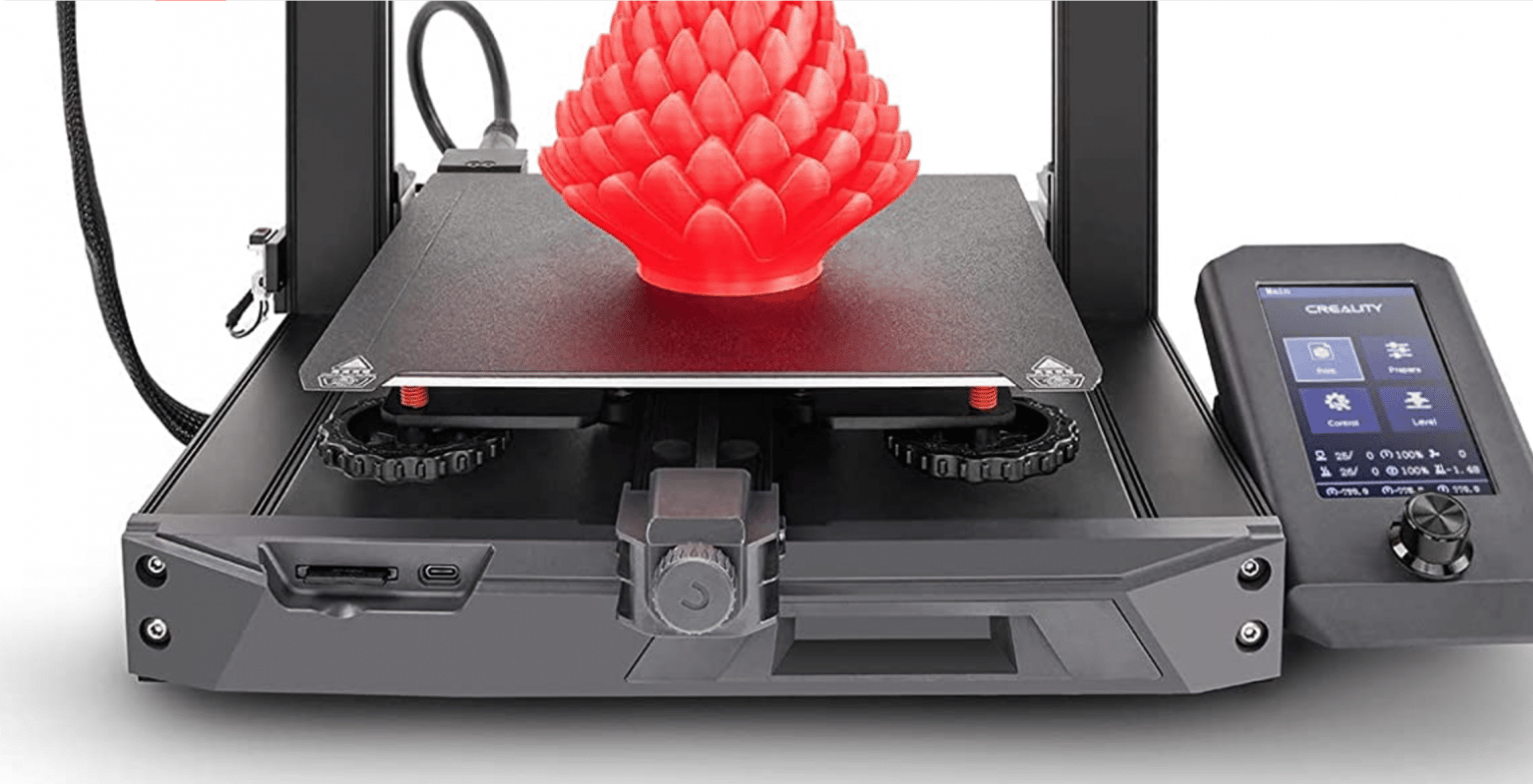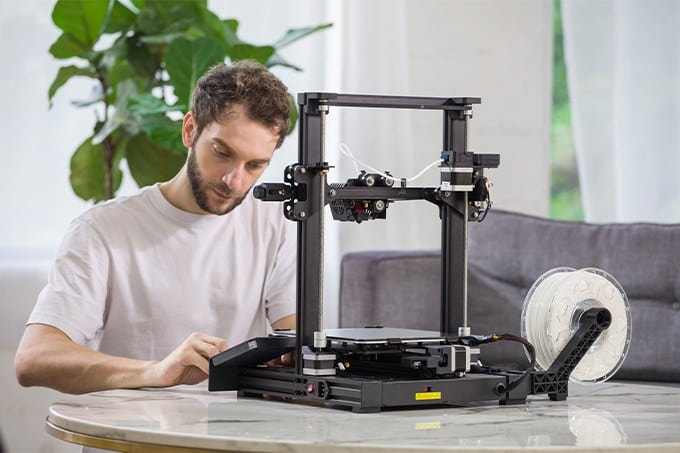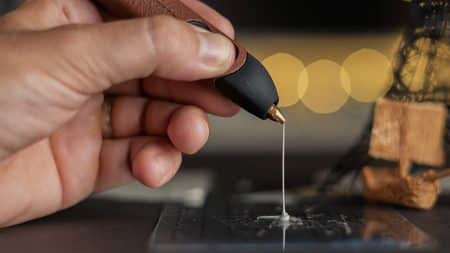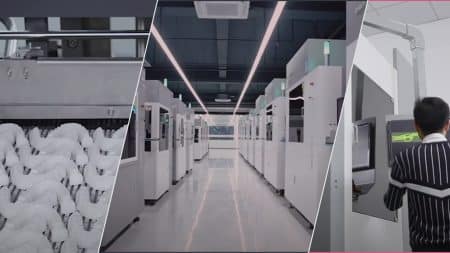Our top-rated 3D printer would suffice for most people; we choose it because it is an all-arounder.
We’re here to help, even though there is no one-size-fits-all solution for home 3D printing. Here are a few pointers to help you navigate this confusing yet fascinating world of terminology. (Click here for a word on terminology: You’ll find a helpful glossary of words to know.)
Which 3D Printers Is Best For Me?
Printers for beginners
Many 3D printers marketed as being for “beginners” or children go to such lengths to entertain the consumer that they easily become confining. As your experience progresses, you can find more limitations than possibilities. If you don’t need the unique features that an especially egregious beginner 3D printer offers, we suggest going with a budget option instead. You’ll save a little money and have a much better chance of learning by doing. And if anything goes wrong, there are whole tribes of people online with each printer who have already asked and answered every question imaginable.
If you’re going cheap, go with the stream.
Although the overall output of budget 3D printers has risen significantly in recent years, quality management can occasionally be lacking. Manufacturers with broader user bases (such as Creality and Anycubic) are adjusting to meet the needs of their newfound fans, including providing improved customer service. That, as well as the owners’ own contributions to the vast online knowledge base. When it comes to troubleshooting today’s top budget 3D printers, no detail is overlooked.
It’s important to get feedback.
Few publications go to the trouble of using the printers of the day, as we do. Manufacturers do not need to sugarcoat what we find because the first time they read, it is also the first time you read it. If you can’t find a review for a printer you’re interested in, send me an email at lexxf@howto3dprint.net
Which 3D Printers Is Best For Me?
Realize the costs.
A 3D printer for the home is rarely a one-time purchase. There are maintenance costs on perishable pieces of the printer, such as nozzles on an FDM printer or FEP film on an MSLA printer, in addition to the ongoing procurement of materials to print with. Of course, parts will wear out or break. So sourcing replacement parts is a good idea if you intend to print for a long time.
Parts would be easier to come by for printers with origins in the RepRap movement and open-source designs, as off-the-shelf components are an integral part of the design culture. Closed box printers for beginners may have the most gentle introduction to printing, but they may also be the most difficult to find replacement parts for. That is if you can even get to the issue and diagnose it.
Understand why you’d like to 3D print.
You can only go so far with the excitement of a new hobby. Expect issues with a home 3D printer because it is the desktopification of an otherwise complicated manufacturing operation. Having a specific end goal in mind for your printing makes you motivated to solve issues and move forward. Printing for the sake of looking cool can result in a small mountain of pointless trinkets, as well as subsequent disinterest due to cost and irritation, as well as waste generation.
When you’ve decided, choose a printer that will make your life easier.
Most home 3D printers have a single extruder, which means that a single printable material is extruded through a single nozzle. They are good 3D printers to start with. Because they are versatile enough for a wide range of applications due to material compatibility, however, if you realize you need to print items with difficult geometries or semi-enclosed sizes, a dual extrusion printer will most likely make your life much simpler. Similarly, single objects that need different material properties would only be possible with dual extrusion. A resin printer is a way to go for high-detail miniatures. Understand the technology to find the right printer for your needs.

Which 3D Printers Is Best For Me?
Choose a printer that is suitable for your space.
In various ways, your printer’s technology and materials can contaminate the surrounding environment. Whereas the size of FDM 3D printers can differ greatly, the spillover is minimal, with some pollution from the melting of the filament cloying the air, making it unwise to spend extended periods nearby. Depending on the templates you print, cleaning is minimal and manageable.
Resin 3D printing, on the other hand, is significantly different and has special requirements. It will help if you think twice before investing in resin 3D printing. The resin has a strong odor to varying degrees. Occasionally noxious. Furthermore, it is extremely poisonous to the atmosphere. Also, it can be dangerous when in contact with the skin for a long period of time. It necessitates the use of dedicated cleanup stations as well as personal protective equipment. To clean prints and dissolve uncured resin from surfaces, you will usually need 95 percent or higher isopropanol.
We recommend using All printers in well-ventilated areas, but this is particularly true for resin 3D printers.






